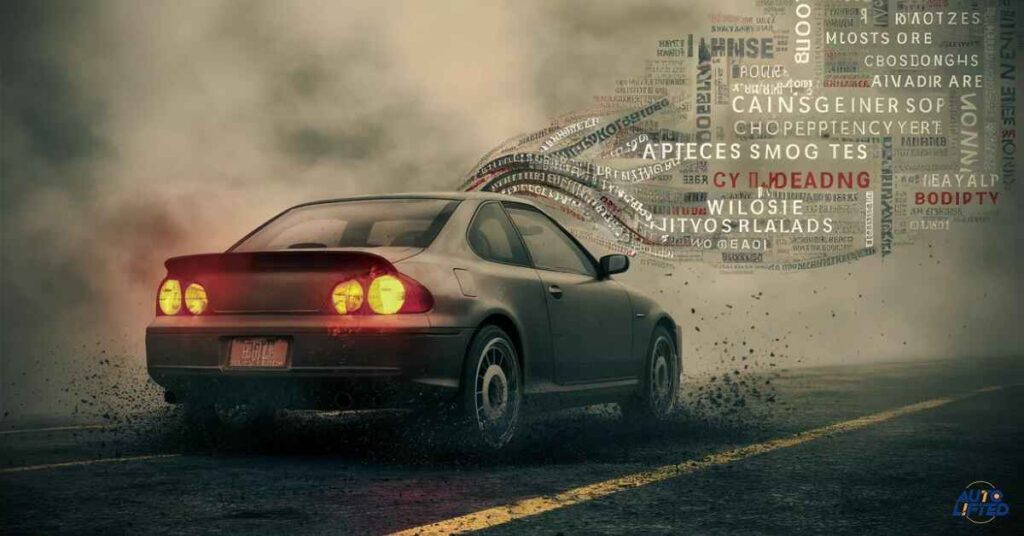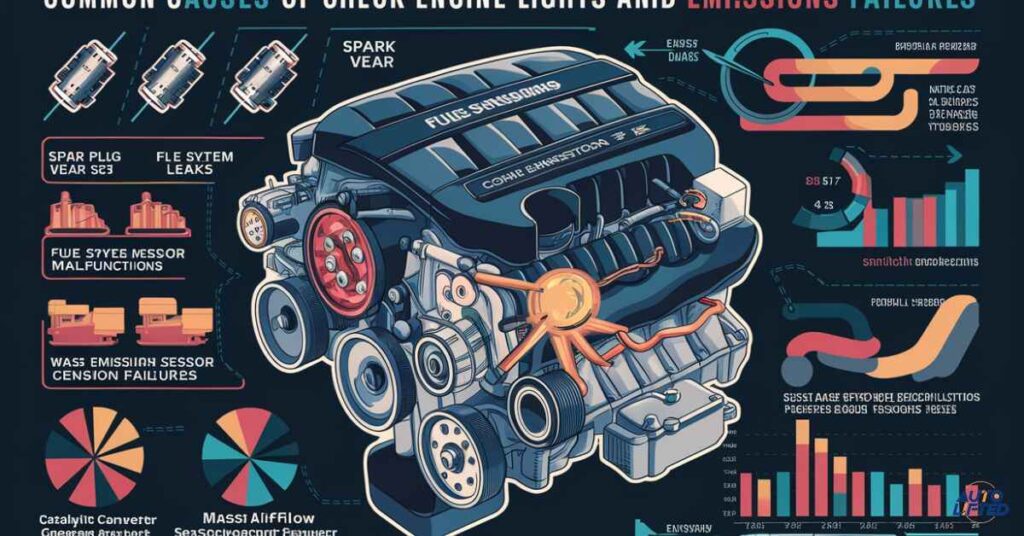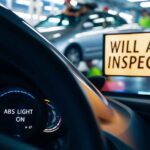We have all been there that dreaded check engine light illuminates on the dashboard, and panic sets in. Not only is it a cause for concern, but it also raises questions. Your vehicle will pass the mandatory emissions test, commonly known as a smog check. Let’s dive into this issue and explore the intricacies of check engine lights, emissions tests and their interplay.
The Basics: Understanding the Check Engine Light and Emissions
The check engine light is a crucial indicator that something is not quite right with your vehicle’s operations. It’s designed to alert you when the onboard diagnostic system detects an issue, often related to the emissions control system. This system plays a vital role in regulating the pollutants released into the atmosphere by your car’s exhaust.
Read This Blog:
Why Won’t My Car Lights Turn Off Inside
Emissions testing, or smog checks, are mandatory in many regions to ensure vehicles comply with air quality standards. Failing a smog test can result in fines, inability to register your vehicle, or even legal consequences in some areas. Maintaining a well-functioning emissions system is not only a legal requirement but also an essential step toward environmental responsibility.
Can You Pass the Smog Test with the Check Engine Light On?

In most cases, the straightforward answer is no. When the check engine light is illuminated, it typically indicates an issue with the emissions system, which will likely cause your vehicle to fail the smog test. The on-board diagnostic system has detected a fault, and until that fault is addressed and the computer is reset, your vehicle will continue to fail the emissions test.
However, there are rare exceptions where the check engine light may be triggered by a minor issue, such as a loose gas cap. In these instances, resetting the computer after fixing the problem could potentially allow your vehicle to pass the smog test. Nonetheless, it’s crucial to have a professional diagnose and address the underlying issue rather than attempting to bypass the check engine light.
Exceptions to the Rule
While it is generally not possible to pass a smog test with the check engine light on, there are rare exceptions. In some cases, the check engine light may be triggered by a minor issue, such as:
- Loose or faulty gas cap: A loose or damaged gas cap can cause the evaporative emissions control system to malfunction, triggering the check engine light. Replacing the gas cap and resetting the computer may resolve the issue.
- Temporary sensor glitch: Occasionally, a sensor may experience a temporary glitch, causing the check engine light to illuminate erroneously. After resetting the computer, the issue may resolve itself.
It’s important to note that these exceptions are uncommon, and attempting to bypass the check engine light without addressing the underlying problem is not recommended. The safest approach is to have a qualified mechanic diagnose and repair any issues before attempting the smog test.
Common Causes of Check Engine Lights and Emissions Failures

Most of the time, the check engine light indicates a more serious issue that will cause your vehicle to fail the emissions test. Some of the most common culprits include:
- Faulty oxygen sensors: Oxygen sensors monitor the air-fuel mixture and help regulate the engine’s combustion process. A malfunctioning oxygen sensor can lead to increased emissions and trigger the check engine light.
- Catalytic converter issues: The catalytic converter is responsible for reducing harmful pollutants in the exhaust. If it becomes clogged or damaged, it can no longer effectively treat the exhaust, leading to higher emissions and a check engine light.
- Spark plug or ignition coil problems: Faulty spark plugs or ignition coils can cause incomplete combustion, resulting in increased emissions and potentially triggering the check engine light.
- Exhaust leaks: Leaks in the exhaust system can allow unfiltered exhaust gases to escape, leading to higher emissions and a check engine light.
- Evaporative emission control system faults: Issues with the system that controls fuel vapors can cause excess emissions and trigger the check engine light.
Preparing for a Smog Test with a Check Engine Light

If your check engine light is on, it’s essential to have the vehicle diagnosed and repaired by a qualified mechanic or smog check facility before attempting the emissions test. Consider obtaining a pre-inspection to identify and address any potential issues beforehand.
Many drivers find it advantageous to choose a facility that can diagnose, repair, and retest the vehicle on-site. This streamlines the process and ensures that any necessary repairs are completed before the final emissions test.
| Preparation Step | Description |
| Diagnose the Issue | Have a professional mechanic or smog check facility diagnose the cause of the check engine light. |
| Repair the Problem | Address any identified issues, such as replacing faulty components or repairing leaks. |
| Reset the Computer | After repairs, reset the on-board diagnostic computer to clear any stored fault codes. |
| Obtain a Pre-Test | Consider getting a pre-inspection to identify and resolve any remaining issues before the official smog test. |
| Choose the Right Facility | Select a facility that can diagnose, repair, and retest the vehicle on-site for convenience. |
By following these steps, you increase the likelihood of your vehicle passing the emissions test and avoiding costly fines or registration issues.
State-Specific Regulations and Considerations
It’s important to note that emissions testing requirements and procedures may vary by state or region. Some areas have particularly strict or unique regulations when it comes to smog checks and check engine lights.
In California, for example, the STAR program implemented in 2012 may prevent smog shops from testing your vehicle if certain emission codes are present but contain no diagnostic information. – California Bureau of Automotive Repair
To ensure compliance, it’s essential to familiarize yourself with your local regulations and requirements. Research the specific rules and procedures in your area, as well as any potential exemptions or exceptions that may apply to your vehicle.
Also Read This Blog:
Will A Car Pass Inspection With Abs Light On
Real-World Examples and Case Studies

To better understand the implications of attempting a smog test with the check engine light illuminated, let’s examine some real-world scenarios:
Case Study 1: Loose Gas Cap
John’s 2012 Honda Civic had been running smoothly until the check engine light came on during his daily commute. Upon inspection, the mechanic discovered that the gas cap was loose, causing an evaporative emissions leak. After tightening the gas cap and resetting the computer, John’s vehicle passed the smog test without any further issues.
This case highlights one of the rare exceptions where a minor fix can resolve the check engine light and allow the vehicle to pass the emissions test.
Case Study 2: Catalytic Converter Failure
Sarah’s 2010 Toyota Camry had been experiencing sluggish acceleration and decreased fuel efficiency. When the check engine light illuminated, she took it to a local smog check facility. The technicians diagnosed a faulty catalytic converter, which was allowing excessive pollutants to escape into the exhaust.
Despite attempts to reset the computer, Sarah’s vehicle failed the smog test due to the catalytic converter issue. Ultimately, she had to replace the catalytic converter before her vehicle could pass the emissions test.
This example underscores the importance of addressing major emissions-related problems, as they will likely cause a vehicle to fail the smog test, even after resetting the computer.
Case Study 3: State-Specific Regulations
Mark, a resident of California, had a 2015 Ford F-150 with a check engine light on. He took it to a smog check facility, where the technicians informed him that they were unable to perform the test due to specific emission codes present, as per the state’s STAR program regulations.
Mark had to seek out a specialized repair shop to diagnose and address the underlying issue before he could obtain a smog certificate for his vehicle.
This case study highlights the importance of understanding and adhering to state-specific regulations and requirements when it comes to emissions testing, particularly in areas with stricter rules like California.
These real-world examples demonstrate the varying outcomes that can occur when attempting a smog test with the check engine light on. While minor issues may be resolvable, major emissions-related problems or unique state regulations can present significant hurdles that must be addressed before a vehicle can pass the emissions test.
Quotes and Expert Insights
To further reinforce the importance of addressing check engine lights and emissions issues, let’s explore some expert insights and quotes:
The check engine light is your vehicle’s way of telling you something is wrong. Ignoring it could lead to more expensive repairs down the road and increased emissions that harm the environment.” Mike Davidson, ASE Certified Master Technician
Smog checks are essential for maintaining air quality standards and protecting public health. Attempting to bypass emissions testing by ignoring check engine lights is not only illegal but also irresponsible. “Dr. Jane Smith, Environmental Scientist”
While there are rare exceptions, a check engine light typically indicates an emissions-related issue that will cause your vehicle to fail a smog test. It’s crucial to have the problem diagnosed and repaired by a professional before attempting the test.” Bob Johnson, Smog Check Facility Owner
These quotes from industry experts and professionals highlight the importance of taking check engine lights seriously, addressing emissions-related issues promptly, and prioritizing environmental responsibility when it comes to vehicle maintenance and smog testing.
Frequently Asked Question
How can I pass smog with a check engine light?
Typically, you cannot pass smog with a check engine light on, as it indicates a problem that affects emissions. You need to diagnose and fix the issue first.
How to turn off check engine light to pass emissions?
Fix the underlying issue causing the check engine light, then use an OBD-II scanner to reset it. Drive the car for a bit to ensure the problem is resolved and the system is ready.
Does check engine light always mean emissions?
Not always, but often. The check engine light can indicate a variety of issues, many of which affect the emissions system.
How do I clear a check engine light?
Use an OBD-II scanner to reset the light, or disconnect the battery for a few minutes. Ensure the issue is fixed; otherwise, the light will come back on.
What sensors need to pass for smog?
Key sensors include the oxygen sensor, catalytic converter efficiency sensor, and the EVAP system sensor. Among others, as they directly impact emissions.
Conclusion
While it is generally not possible to pass a smog test with the check engine light on. There are rare exceptions where a minor issue may be the culprit. However, attempting to bypass the check engine light without addressing. The underlying problem is not recommended and could lead to further complications.
Maintaining a well-functioning emissions system is not only a legal requirement. But also an essential step toward environmental responsibility. Regular vehicle maintenance and promptly addressing any check engine light or emissions. Related issues should be a priority for all drivers.
If you find yourself in a situation where the check engine light is illuminated. Seek professional assistance from a qualified mechanic or smog check facility. They can diagnose and repair the issue, increasing the likelihood of your vehicle passing the emissions test. Avoiding costly fines or registration complications.
Stay informed about your local regulations and requirements. Prioritize the health of your vehicle’s emissions system. By taking a proactive approach, you can ensure a smooth smog, Check process and contribute to cleaner air for everyone.







